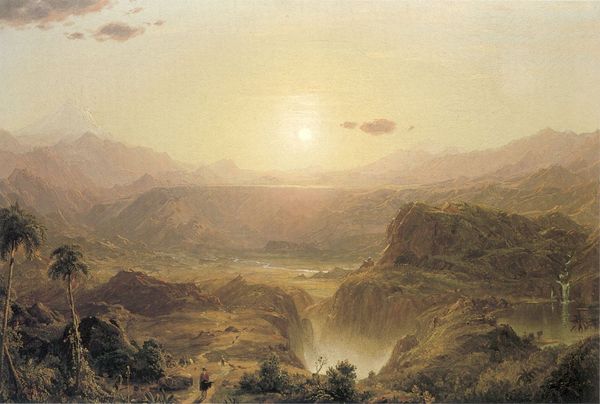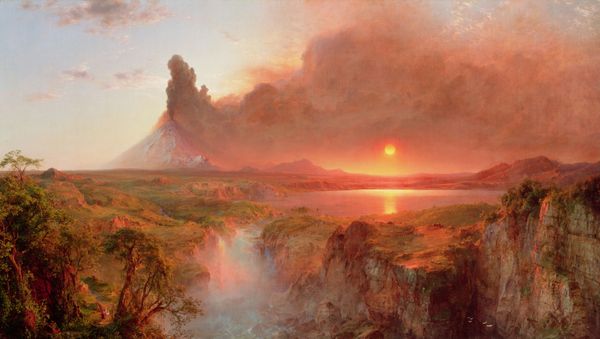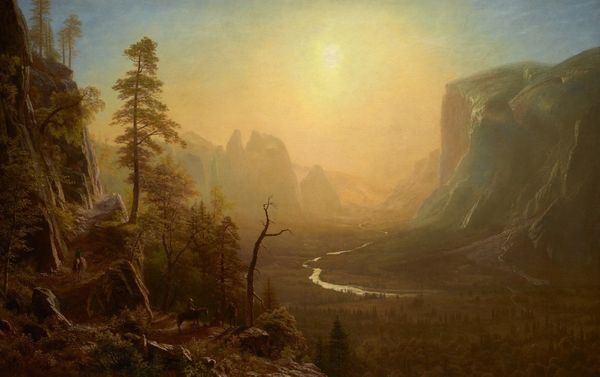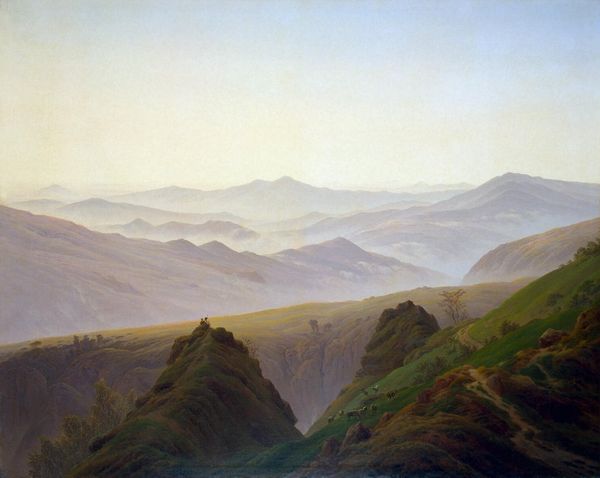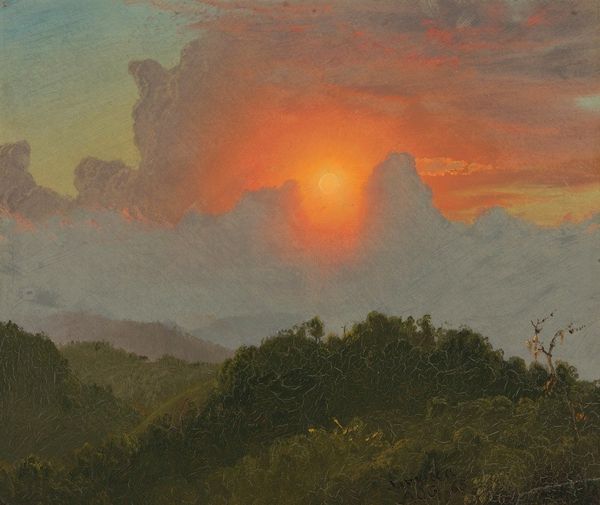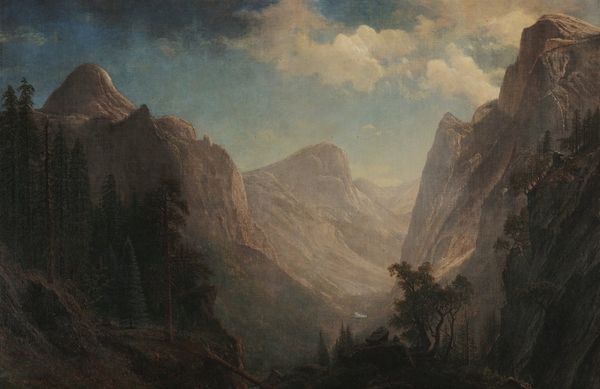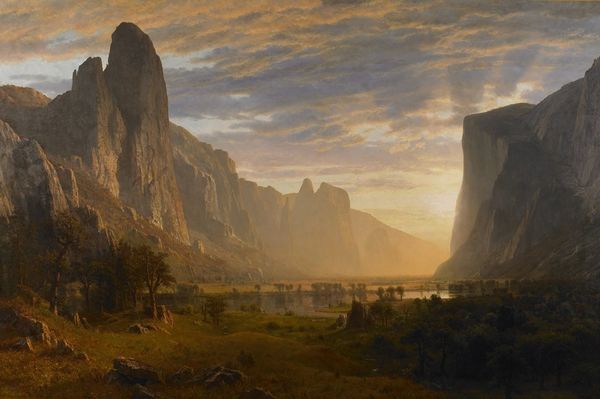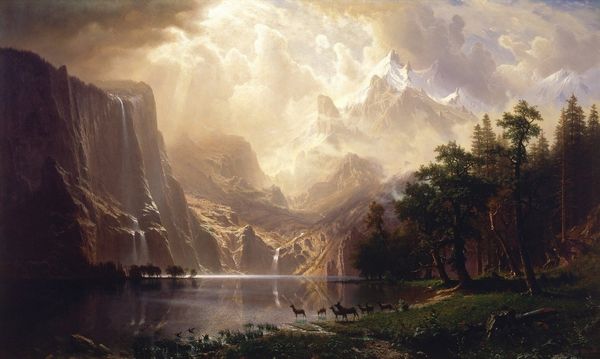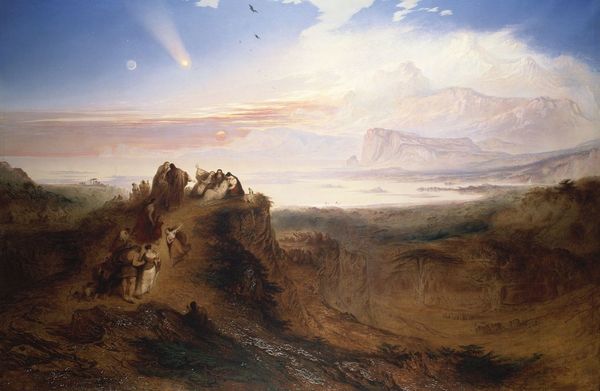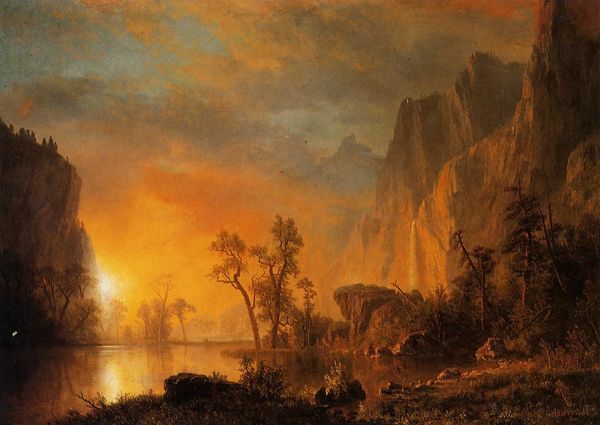
Dimensions: 121.9 x 194.3 cm
Copyright: Public domain
Editor: We’re looking at "The Andes of Ecuador," painted by Frederic Edwin Church in 1855. It’s an oil painting and it’s vast – breathtaking, even. All of those mountains seem to just fade into the horizon. What do you see in this piece, especially considering its historical moment? Curator: I see a landscape deliberately constructed to promote a specific worldview. Remember, this was painted at a time when Manifest Destiny was a powerful idea in the United States, the idea of expanding west and viewing the natural world as this sort of space for expansion. And Church was at the center of American cultural institutions shaping public thought. Notice how the painting seems to invite the viewer in. Does it not make you consider that you could step right into the South American landscape? Editor: Yes, absolutely. There's this sense of invitation but also grandeur, an idealized nature. Do you think that’s deliberate too? Curator: Definitely. The composition, with the towering mountains and radiant sunlight, elevates the landscape to something almost divine. It promotes a sense of awe and wonder but also suggests a land ripe for exploration and perhaps exploitation. The romantic vision hides colonial realities. Consider whose perspective this 'virgin' landscape excludes, right? Who lived there and who continues to live there. Editor: That's a really good point. It's easy to get lost in the beauty of it without thinking about the social and political context that created this kind of image. Curator: Precisely. We can enjoy the beauty, appreciate Church’s skill, but we should always critically consider the power dynamics at play in creating and displaying such imagery. Editor: So, understanding the historical and cultural background really changes how you see the artwork, making it less about just the beautiful scenery and more about how those kinds of scenes get represented. I'm glad to have seen beyond its obvious attraction to start considering broader contexts. Curator: Precisely. That's exactly the point, the beautiful aesthetic often blinds people to the true intention of a work like this one.
Comments
No comments
Be the first to comment and join the conversation on the ultimate creative platform.

